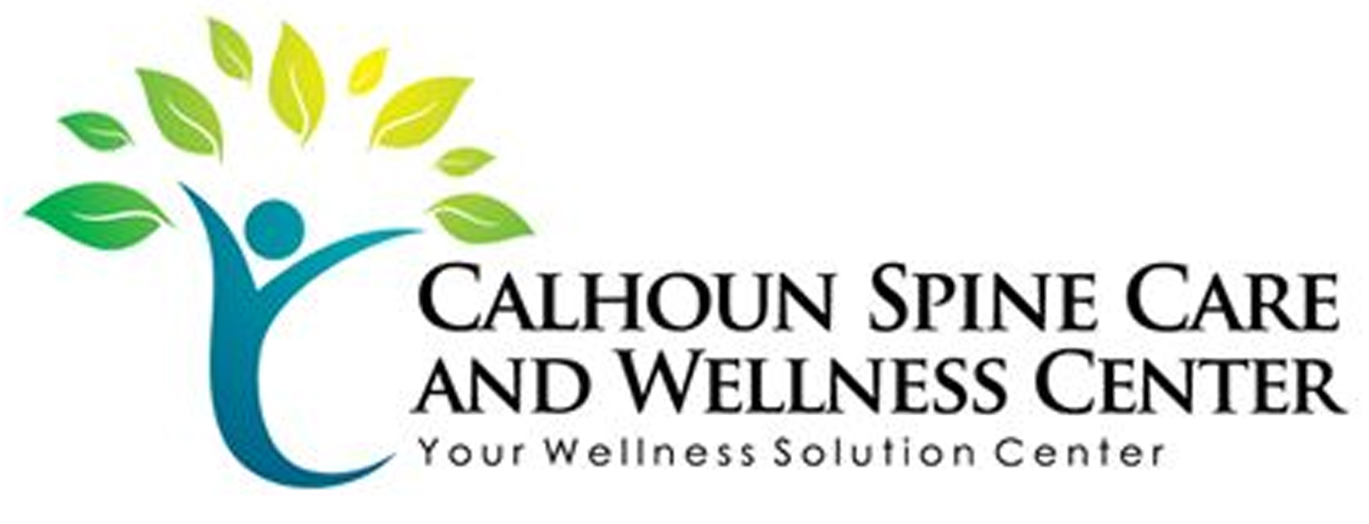If you're dealing with sciatica pain, you might be looking for effective ways to find relief. In Calhoun, various techniques can offer up to 90% reduction in discomfort. By exploring options like physical therapy, chiropractic care, and targeted exercises, you can tailor a recovery plan that suits your needs. But it doesn't stop there; incorporating lifestyle changes and pain management strategies can further enhance your journey to wellness. Curious about which specific techniques could work best for you? Let's uncover some practical solutions that might just make a difference.
Understanding Sciatica Pain
When you experience sciatica pain, it often feels like a sharp or burning sensation that travels down your leg from your lower back. This discomfort usually stems from irritation or compression of the sciatic nerve, the longest nerve in your body. It runs from your lower back, through your hips and buttocks, and down each leg. Understanding the nature of this pain is vital for managing it effectively.
You might notice that sciatica pain can vary in intensity. Some days, it's just a mild ache; other times, it can be debilitating. It's often accompanied by other symptoms like numbness, tingling, or weakness in the affected leg. These sensations can make daily activities challenging, and they often worsen when you sit for long periods, stand up suddenly, or lift heavy objects.
Identifying the underlying cause of your sciatica is essential. Common culprits include herniated discs, spinal stenosis, or degenerative disc disease. In some cases, muscle strain or injury can also trigger this nerve pain. Knowing what's causing your discomfort can help you take the right steps toward relief.
While the pain can be frustrating, it's important to remember that sciatica is often treatable. By understanding the pain and its origins, you can make informed decisions about your care and explore various relief techniques that may work for you.
Physical Therapy Approaches
How can physical therapy aid in alleviating sciatica pain? When you experience sciatica, targeted physical therapy can provide significant relief. A skilled physical therapist assesses your condition and tailors a program to address your specific symptoms. By focusing on improving your strength, flexibility, and mobility, you can alleviate pressure on the sciatic nerve, which is often the source of your pain.
Your therapist may introduce various techniques to promote healing. Manual therapy is one approach, which involves hands-on techniques to manipulate your spine and other joints. This can help reduce pain and improve your range of motion.
Additionally, modalities like heat, cold, or electrical stimulation may be used to decrease inflammation and enhance circulation in the affected area.
Education plays an essential role in your recovery. Your therapist will teach you about proper body mechanics and posture to prevent further injury. Understanding how to move safely and effectively can empower you to manage your condition better.
Another key aspect of physical therapy is the focus on gradual progression. Your therapist will monitor your progress and adjust your treatment plan as needed, ensuring you're always moving toward recovery without overexerting yourself.
Stretching and Exercises
When you're managing sciatica, targeted stretching techniques can make a big difference in your comfort level.
Strengthening your core muscles also helps support your spine, reducing pressure on your sciatic nerve.
Incorporating a daily exercise routine not only enhances flexibility but also promotes overall wellness, making it easier to cope with the discomfort.
Targeted Stretching Techniques
Targeted stretching techniques can considerably alleviate the discomfort associated with sciatica. By focusing on specific muscle groups, you can relieve tension and improve flexibility.
One effective stretch is the piriformis stretch. To perform it, lie on your back, bend your knees, and cross one ankle over the opposite knee. Gently pull the uncrossed knee toward your chest until you feel a stretch in your buttock.
Another beneficial stretch is the seated hamstring stretch. Sit on the edge of a chair, extend one leg straight out, and reach toward your toes while keeping your back straight. Hold this position for 15-30 seconds, then switch sides.
You might also try the knee-to-chest stretch. Lie on your back and pull one knee toward your chest, holding for 15-30 seconds before switching to the other leg. This stretch helps relieve pressure on the sciatic nerve.
Incorporating these targeted stretching techniques into your routine can promote healing and reduce discomfort.
Remember to listen to your body; if a stretch feels painful, ease off. Consistency is key, so aim to stretch daily for the best results.
Strengthening Core Muscles
Strengthening your core muscles is essential for managing sciatica, as a strong core provides stability to your spine and can reduce pressure on the sciatic nerve. When your core muscles are strong, they support your pelvis and lower back, improving your posture and alignment. This can alleviate some of the discomfort associated with sciatica.
To strengthen your core, start with simple exercises like planks and bridges. For a plank, position yourself face down, resting on your forearms and toes, keeping your body in a straight line. Hold this position for 20-30 seconds, gradually increasing the time as you gain strength.
For bridges, lie on your back with your knees bent and feet flat. Lift your hips toward the ceiling, squeezing your glutes and core. Hold for a few seconds before lowering back down.
Incorporating these exercises into your routine a few times a week can make a significant difference in your core strength and overall stability.
Remember to focus on your form to avoid injury, and consult with a healthcare professional before starting any new exercise program, especially if you're experiencing pain.
Daily Exercise Routine
A consistent daily exercise routine is essential for managing sciatica symptoms and improving overall mobility. By incorporating stretching and targeted exercises, you can alleviate pain and enhance your flexibility.
Here are three key components to include in your routine:
- Gentle Stretching: Focus on stretches that target the lower back, hips, and hamstrings. Simple movements like the piriformis stretch can help relieve tension and promote blood flow.
- Strengthening Exercises: Incorporate low-impact activities like walking, swimming, or cycling. These exercises not only build strength but also improve endurance without putting excess strain on your body.
- Posture Awareness: Pay attention to your posture throughout the day. Proper alignment when sitting or standing can prevent further irritation of the sciatic nerve.
Alternative Therapies
When dealing with sciatica, alternative therapies like acupuncture and chiropractic adjustments can offer significant relief.
You might find that acupuncture helps alleviate pain by targeting specific pressure points, while chiropractic adjustments can improve spinal alignment and reduce discomfort.
Exploring these options could enhance your overall treatment plan and help you regain mobility.
Acupuncture for Pain Relief
Acupuncture offers a unique approach to alleviating sciatica pain, tapping into the body's natural healing mechanisms. This ancient practice involves inserting fine needles into specific points on your body, aiming to restore balance and promote pain relief.
You might wonder how it actually helps with sciatica. Here are three key benefits that could resonate with you:
- Reduced Pain: Many people experience significant pain relief after just a few sessions, allowing them to return to daily activities without the constant ache.
- Improved Mobility: As the tension in your muscles eases, you may notice an increase in your range of motion, making it easier to move without discomfort.
- Holistic Healing: Acupuncture addresses not just the symptoms but also the underlying issues, promoting overall well-being and balance in your body.
If you're struggling with sciatica, consider giving acupuncture a try. It might just be the relief you've been seeking.
Chiropractic Adjustments Benefits
If you're exploring alternative therapies for sciatica relief, chiropractic adjustments could be a powerful option. These adjustments focus on realigning your spine, which can alleviate pressure on the sciatic nerve and reduce pain. By improving spinal function, you may experience increased mobility and a better range of motion.
Chiropractors utilize hands-on techniques to manipulate your spine, targeting areas that may be misaligned or restricted. This process can enhance blood flow, reduce inflammation, and promote healing in the affected areas. Many patients report immediate relief after an adjustment, while others find that consistent sessions lead to long-term benefits.
Additionally, chiropractic care emphasizes a holistic approach. Your chiropractor may suggest exercises and lifestyle changes to strengthen your back and prevent future flare-ups. This proactive strategy can empower you to take control of your pain management.
It's essential to choose a qualified chiropractor who understands your specific condition. They can create a personalized treatment plan tailored to your needs.
Lifestyle Modifications
Making simple lifestyle modifications can substantially alleviate sciatica symptoms. By making a few changes to your daily routine, you can help reduce pain and improve your overall quality of life.
Here are three key adjustments you might consider:
1. Stay Active: Regular physical activity strengthens your back and core muscles, providing better support for your spine. Aim for at least 30 minutes of moderate exercise most days.
Whether it's walking, swimming, or biking, find activities you enjoy to make it easier to stick with.
2. Practice Good Posture: Pay attention to how you sit and stand throughout the day. Slouching can put extra pressure on your spine and aggravate sciatica.
Use ergonomic chairs, keep your feet flat on the floor, and align your ears, shoulders, and hips to maintain a neutral spine.
3. Stretch Regularly: Incorporating stretching into your routine can help ease tension in your muscles and improve flexibility.
Focus on stretches that target your lower back, hips, and legs. Simple stretches like hamstring stretches or piriformis stretches can greatly benefit your sciatic nerve.
Pain Management Techniques
Managing pain effectively is essential for anyone suffering from sciatica. You've got several techniques at your disposal to help alleviate discomfort. First, over-the-counter pain relievers like ibuprofen or acetaminophen can provide immediate relief. These medications reduce inflammation and dull the pain signals, making daily activities more manageable.
Heat and cold therapy are also powerful tools. Applying a cold pack to the affected area can numb pain and reduce swelling, while heat therapy relaxes tense muscles. You might find alternating between the two works best for you. Just remember to use a barrier, like a towel, to protect your skin.
Physical therapy is another effective option. A trained therapist can guide you through exercises that strengthen your back and core, improving your posture and flexibility. This not only helps relieve current pain but can prevent future flare-ups.
Mindfulness and relaxation techniques can aid in pain management, too. Practices like yoga or meditation help you focus on your breath and reduce stress, which often exacerbates pain. Incorporating these methods into your routine can provide both physical and mental relief.
Lastly, consider talking to your doctor about prescription medications or alternative treatments like acupuncture. They can tailor a pain management plan specific to your needs.
Ergonomic Adjustments
Many people underestimate the impact of ergonomic adjustments on sciatica relief. However, making simple changes to your workspace or daily habits can greatly alleviate pressure on your sciatic nerve.
It's time to take control and create an environment that supports your spine.
Here are three essential ergonomic adjustments you should consider:
- Chair Height: Make sure your chair is at the right height so your feet rest flat on the floor, or use a footrest if needed. This position helps maintain proper spinal alignment and reduces strain on your lower back.
- Monitor Placement: Position your computer monitor at eye level. If you're constantly looking down or craning your neck, you're putting unnecessary stress on your back and hips, which can worsen your sciatica.
- Regular Breaks: Don't underestimate the power of taking breaks. Set a timer to remind yourself to stand up, stretch, or walk around every 30-60 minutes. This simple act can help relieve tension and improve circulation, making a noticeable difference in your discomfort.
Implementing these ergonomic adjustments can dramatically enhance your daily comfort and reduce the intensity of your sciatica.
Remember, your workspace should support your health, not hinder it. Taking a proactive approach to your environment can lead to a happier, healthier you, free from the nagging pain of sciatica.
Don't wait—start making these adjustments today!
Mindfulness and Relaxation
Incorporating mindfulness and relaxation techniques into your daily routine can greatly reduce the severity of sciatica symptoms. These practices help you manage stress and tension, which can exacerbate your discomfort. By focusing on the present moment, you can develop a deeper awareness of your body and its sensations, allowing you to respond to pain with greater calmness.
Start by setting aside a few minutes each day for mindfulness meditation. Find a quiet space, sit comfortably, and close your eyes. Focus on your breath, inhaling deeply and exhaling slowly. If your mind wanders, gently bring your attention back to your breath. This practice can help you cultivate a sense of peace and reduce the perception of pain.
You might also consider integrating gentle stretching into your mindfulness routine. Stretching can release muscle tension, improve flexibility, and enhance blood flow, all of which can ease sciatica symptoms. While stretching, pay close attention to how your body feels, and avoid pushing yourself too hard. Listen to your body and adjust your movements as needed.
Additionally, practicing progressive muscle relaxation can be beneficial. Tense each muscle group for a few seconds and then release. This technique helps you become more aware of the tension in your body and promotes relaxation.
Incorporating these mindfulness and relaxation techniques not only aids in pain management but also improves your overall well-being. By making these practices a regular part of your life, you can find greater relief from sciatica symptoms.
Seeking Professional Help
Seeking professional help can be an important step in finding relief from sciatica symptoms. While home remedies and self-care techniques can offer some respite, consulting a healthcare professional guarantees you receive a tailored approach to your condition. They can assess your unique situation, recommend effective therapies, and provide guidance on managing your pain.
Consider these reasons why seeking help is vital:
- Expert Diagnosis: A healthcare provider can accurately diagnose the root cause of your sciatica, distinguishing it from other conditions that may mimic its symptoms. This guarantees you get the right treatment.
- Personalized Treatment Plans: Professionals can design a treatment plan specifically for you, incorporating physical therapy, medications, or alternative therapies that align with your needs and lifestyle.
- Long-term Relief Strategies: They can equip you with tools and exercises to prevent future flare-ups, empowering you to take control of your health and improve your quality of life.
When you seek professional help, you're not just addressing the pain; you're investing in your overall well-being.
Whether it's a chiropractor, physical therapist, or medical doctor, don't hesitate to reach out. Taking this step can be the turning point in your journey towards relief from sciatica.
Conclusion
To sum up, finding up to 90% relief from sciatica in Calhoun is possible through a combination of targeted therapies and lifestyle changes. By engaging in physical therapy, incorporating stretching and exercises, and making ergonomic adjustments, you can greatly alleviate your pain. Don't forget to explore alternative therapies and pain management techniques, and consider mindfulness practices to enhance your recovery. Remember, seeking professional help can guide you on this journey to a pain-free life.



